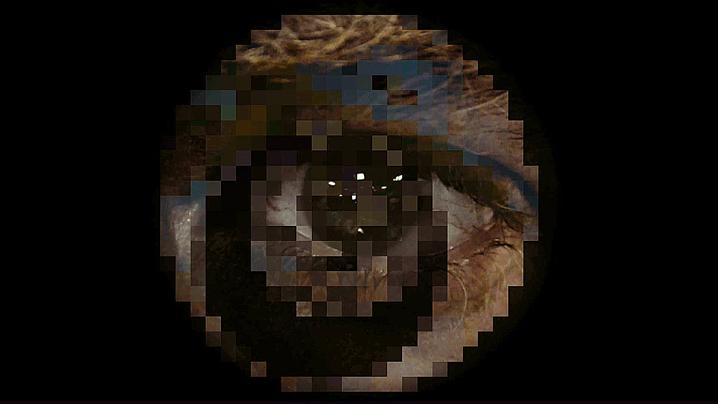Société Anonyme

Société Anonyme single channel HD video 7.30 min. 2017
Beginning in 1924 Marcel Duchamp began work on the dada film Anémic Cinéma, eventually completing it two years later with the help of Man Ray. The film features nine rotating text panels alternating in succession with ten of Duchamp’s rotorelief optic illusion disks. Katrina Martin has noted that the text/image alternation in Duchamp’s film is a structural allusion to, or pun on, the silent films of the time. Anémic Cinéma followed the same text/image structure common to most silent films but to a radically different end. Normally text panels were inserted between action sequences to help viewers to resolve the preceding scene and transition to the next, thereby clarifying the narrative arc. In contrast, each of Duchamp’s cryptic, punning captions problematize the apparent clarity of the preceding sequences. The unruliness of their evocative poetry, alliterative humor and punning sexual aggression disrupt the conceptual transparency of the visual structure, and by so doing, thwart most viewers' hopes of establishing an easy, singular interpretation. The spinning words gyrating spirals of Anémic Cinéma are both conceptually and physically disorienting. Even the title frame is a funhouse mirror of sorts, with the (almost) anagram "Anémic Cinéma" displayed as a bilaterally symmetrical chevron, each word the imperfectly mirrored distortion of the other.


Anémic Cinéma Marcel Duchamp & Man Ray 1926
The cinematic avant guard of another century may seem to be a rather strange reference point to begin thinking about peace, but in my defense, This isn’t where I began the process, it’s where I ended up. I began as one might expect, by asking the most obvious of questions: Given the evident practical utility of peace and the nearly universal moral validation of peace over conflict, suffering and violence, why does peace seem so elusive, so complicated and so increasingly embattled? What are the biggest challenges or obstacles to achieving something that seems so universally desirable?
I fairly quickly settled on distrust, paranoia, and dehumanization as my responses to this second question. Being an artist I couldn’t help but focus on the scopic dimension of these obstacles, specifically how distrust, paranoia and dehumanization influence how we see (or do not see) ourselves in the other. Human relations tend to take the form of a bilaterally symmetrical chevron with each party the imperfectly mirrored distortion of the other. In the other we see our own distrust, and deem them untrustworthy. We sense our own paranoia reflected back and think them delusional. If we fail to perceive ourselves in the other at all, then the other appears less then human.
The term "perception" most often serves as a kind of foil to reality, an acknowledgment of the possibility of a tension or rift between appearance and actuality, but the truth is: We actualize appearance transforming our perception into reality. So what is the nearly perfect actualization of a distrustful, paranoid and dehumanizing vision? The drone.
In Société Anonyme themes of dehumanization and telematic warfare unfold in the parallels between Predator drone signature strikes, video games, and the prescient, disorienting "nonsense" wordplay of Duchamp's Anémic Cinéma. The title of my video was drawn from the name of the art organization founded by Katherine Deier, Duchamp and Man Ray in 1920. Man Ray suggested Société Anonyme as the name of their group thinking it meant "anonymous society", rather than it's less literal but more accurate translation, "incorporated". In choosing this title I'm playing off of both meanings alluding in turn to the "corporate" military industrial complex, to the faceless interactions of the pilots and victims, and to the covert operations of the CIA, U.S. military and terrorist paramilitary organizations. Sadly, almost all of the identities of the hundreds of civilian casualties attributed to drone strikes also remain unknown to us.
My video is structured similarly to Anémic Cinéma, alternating rotating "disks" with poetic, disorienting text. In Société Anonyme I have borrowed only one of the seven text panels from Duchamp's film: "Avez-vous déjà mis la moëlle de l'épée dans le poêle de l’aimée? In my video this is repeated three times, each a different possible (punning) translation of this same phrase:
Have you put the heart of the spy in the boiler of embroidered gold?
Have you now placed the essence of the voyeur in the pall of the fair-haired?
Have you already the marrow of the sword in the death shroud of the beloved?
The viewer watches most of the action through a small, rotating, pixellated aperture that evokes Duchamp's rotating disks, a scanning radar dish, an eyeball, and the Predator drone's camera turret. I have taken a structuralist approach that literalizes the process of seeing through. In the video the viewer is forced to become aware of seeing telematically through the tropes of technology. Additionally the viewer must see trough the language. Viewers can just make out the images beyond as the phrases devolve into pixels. All of the spoken dialogue is taken from online video game play. I debated on whether this might not be a somewhat heavy handed way to make the connection between male violent game culture and telematic warfare, but in the end I feel that the adolescent and often disturbing voiceover added a touch of humor and dynamic edginess while allowing me to editorialize in an oblique way that didn't sound didactic.